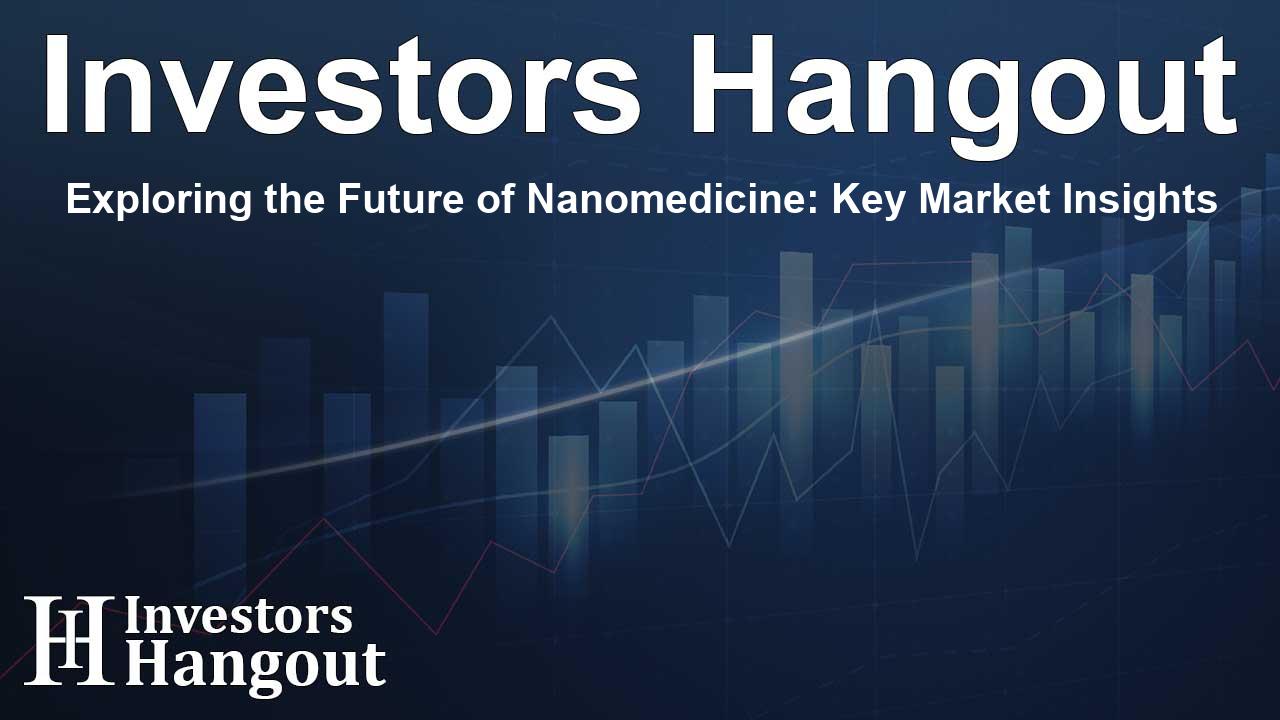Exploring the Future of Nanomedicine: Key Market Insights

Nanomedicine Market: Growth Outlook
The global nanomedicine market is valued at USD 182.45 billion today and is expected to reach USD 406.57 billion by 2033. That trajectory reflects several forces working together: more out?licensing of nanodrugs, broader access to care as healthcare facilities expand, and steady progress in how therapies are designed. In simple terms, nanomedicine uses nanotechnology to create pharmaceuticals for diagnosing, treating, and preventing disease at the molecular level—medicine that works where the biology starts.
What Nanomedicine Covers
Nanomedicine centers on specialized, often programmable pharmaceuticals. These therapies draw on a toolkit that includes nanoparticles and nanorobots to fine?tune how drugs behave in the body. The field spans practical, high?impact areas: targeted drug delivery, sharper diagnostic imaging, immunizations, regenerative medicine, and implants designed to do more with less. To build these products, developers commonly work with liposomes, inorganic materials, and metal?based nanoparticles, choosing among them to match the job at hand.
The thread that ties these pieces together is precision. By designing at the nanoscale, developers aim to concentrate effects where they’re needed and reduce what isn’t. It’s the same goal—better outcomes, fewer trade?offs—pursued with smaller, smarter tools.
Key Insights and Market Drivers
North America Leads the Market
North America remains the leading region, accounting for 36.44% of market revenue in the most recent assessment. Its position is supported by steady technological innovation, a strong push for early disease detection, and a health system that prioritizes preventive care. A rising burden of cardiovascular diseases also amplifies demand for solutions that nanomedicine is well suited to deliver.
Diagnostic Imaging and Oncological Segment Surge
Among applications, diagnostic imaging stands out with an estimated 41.43% market share. The appeal is clear: nanomedicine can enhance imaging technologies and help clinicians see more, sooner. Oncology is another major pillar, capturing roughly 38.65% of market activity as cancer care increasingly relies on advanced, targeted approaches.
Market Dynamics and Opportunities
Drivers of Growth
Broader use cases are pulling the market forward. Early detection, more tailored treatments, and continual nanotechnology improvements are expanding what’s possible. As bigger, bulkier systems give way to nanoscale designs, therapies can be built to act with greater specificity—small changes with meaningful clinical impact.
Regulatory Challenges
Growth isn’t frictionless. Regulatory scrutiny is high, as it should be, and can slow momentum. Costs associated with nanoparticle?based medicines often exceed those of traditional options, which complicates adoption. There are also real questions about use?related risks that must be addressed clearly and consistently.
Opportunities Amidst Challenges
Even so, the outlook remains constructive. Supportive government initiatives that invest in and back nanotechnology research are opening doors. Meanwhile, aging populations and the rising prevalence of chronic diseases continue to lift demand for innovative medical solutions, reinforcing the case for market expansion.
Challenges and Future Outlook
A key challenge is the still?limited understanding of how nanoparticles interact with the body’s metabolic processes. Progress hinges on addressing safety and toxicity concerns head?on so these technologies can be confidently used in everyday care. With rigorous evaluation and clear communication, nanomedicine can move from promise to practice at greater scale.
Frequently Asked Questions
What is the expected growth rate of the nanomedicine market?
The nanomedicine market is projected to grow at a Compound Annual Growth Rate (CAGR) of 8.34% from 2024 to 2033, reflecting steady uptake across diagnostics and treatment.
What drives the demand for nanomedicine?
Demand is driven by stronger drug delivery and diagnostic imaging capabilities, along with the expansion of healthcare facilities that bring these innovations to more patients.
Which region is the largest market for nanomedicine?
North America holds the largest share at present, supported by technological advances, an emphasis on prevention and early detection, and a high prevalence of cardiovascular diseases.
What are some applications of nanomedicine?
Core applications include targeted drug delivery, diagnostic imaging, immunizations, regenerative medicine, and implant technologies that leverage nanoscale design.
What are the challenges facing the nanomedicine market?
Key hurdles include regulatory demands, higher costs for nanoparticle?based treatments, and ongoing safety questions about how nanoparticles interact with biological systems.
About The Author
Contact Thomas Cooper privately here. Or send an email with ATTN: Thomas Cooper as the subject to contact@investorshangout.com.
About Investors Hangout
Investors Hangout is a leading online stock forum for financial discussion and learning, offering a wide range of free tools and resources. It draws in traders of all levels, who exchange market knowledge, investigate trading tactics, and keep an eye on industry developments in real time. Featuring financial articles, stock message boards, quotes, charts, company profiles, and live news updates. Through cooperative learning and a wealth of informational resources, it helps users from novices creating their first portfolios to experts honing their techniques. Join Investors Hangout today: https://investorshangout.com/
The content of this article is based on factual, publicly available information and does not represent legal, financial, or investment advice. Investors Hangout does not offer financial advice, and the author is not a licensed financial advisor. Consult a qualified advisor before making any financial or investment decisions based on this article. This article should not be considered advice to purchase, sell, or hold any securities or other investments. If any of the material provided here is inaccurate, please contact us for corrections.
